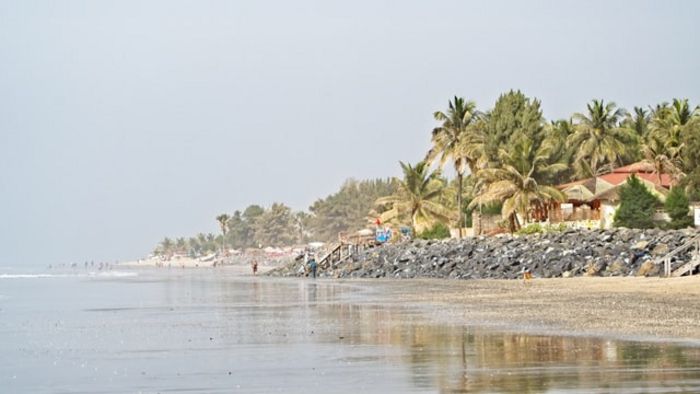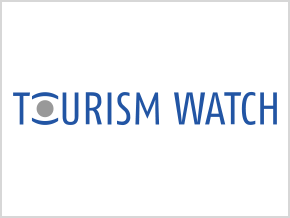Our small country of The Gambia on the Western Coast of Africa got internal self-rule from Britain in 1965. We call it “independence”. In the same year, however, we had an investor in tourism bringing 300 tourists, mainly from Scandinavia. In 1970, we had a Republican status and a president. In 1975, a white paper on tourism was introduced which was very prescriptive and was not our making. It was consultants from outside suggesting that we should get into tourism and how to do it. Of course, our government of that day had no experience with tourism development. The tourism industry was seen just like oil is seen in other countries, because we have fewer resources.
Out of 60 kilometres of beach, 40 kilometres were dedicated as Tourism Development Area (TDA), which means no one is permitted to build on the beach without the government’s permission. In a lot of the areas that were demarcated, there were women with vegetable gardens and growing rice. The land was taken from them. Many fisherpersons were displaced from the beaches where new tourism development was coming up. For all the land that was taken, communities were not compensated.
Once you are advised to open up to tourists coming into your country, you are also being advised to develop the infrastructure, which is capital intensive. For such investments, e.g. airport expansion, countries like The Gambia have to get loans from international banks. And that’s exactly what happened. We became heavily indebted and by 1985 we could not pay the loans anymore.
Structural Adjustment under the IMF
Like it happened in most African countries, we had the IMF coming in to determine what our financial policy should be, what our economy should look like in a prescription called the Economic Recovery Programme. Is it really “economic recovery” or debt recovery? In this prescription, we were not going to be given any more money to bridge our budget deficits unless we satisfy certain conditions imposed by the IMF.
As a small country of eleven thousand square kilometres with a population of about a million people at that time and with “limited resources”, the government of that day had to justify their vulnerability to succumb to such a pressure. They were advised to reduce expenditure by laying off workers in the public sector, to float the local currency which was linked to the British Pound, surrendering it to market fluctuations. In addition they were told not to subsidise our farmers, while the EU and US governments were of course subsidising their agriculture.
Privatisation of the Economy
The government was also asked to implement a divestiture programme, which meant that it had to sell all the businesses it owned, including all the hotels and the few industries we had. This had serious impacts.
When the government started to invite investors into tourism, there was a ten year tax holiday mainly to attract foreign direct investors. The industry started to be dominated by a few tour operators who were mainly selling The Gambia as a winter sun destination. For these tour operators, The Gambia was attractive only during the winter months, while during the summer they used to focus on Mediterranean destinations. In this way seasonality was being imposed. They also defined the prices they have to pay. With such a situation compounded by poor wages and lack of organised unions the industry was not bringing the required income to the labour force.
Weak Linkages
What resulted was an increasing dependency and from the beginning we also had weak linkages with the tourism industry. What is important in tourism development is to use tourism as a market, so that tourists can consume what people produce. Weak linkages mean that a lot of things in hotels are imported instead of being sourced from the local economy. The result was that poverty increased, inflation accelerated, per capita income declined, and agricultural production fell. The credit worthiness of the country declined to a stage that when the new government took over in 2017 we were told that we do not have a right to get loans from anywhere without them being approved by the IMF. We can only get humanitarian assistance. That shows the degree of vulnerability of a country like The Gambia.
Tourism as a Risk
With tourism contributing around 20 percent to our GDP, as reported by The Gambia Tourism Board before the pandemic, we are becoming more dependent on a tourism industry which is not at all sustainable, given these realities. With COVID-19 in March 2020 the government closed all the borders. Hotels, restaurants and other tourism facilities were shut down. With the pandemic, people began to see how vulnerable we are. Not just the informal sector, but the whole tourism industry is vulnerable. We are beginning to see that tourism for us is becoming a high risk. We had Ebola in 2014, we had the Thomas Cook bankruptcy in 2019. Now we have COVID-19 and businesses are going bankrupt.
According to the Debt Sustainability Analysis 2018 of the World Bank, The Gambia is currently in external debt distress and public debt is unsustainable. A significant pipeline of already-contracted loans poses risks to solvency. Due to COVID-19, The Gambia benefited from IMF debt service relief under the Catastrophe Containment and Relief Trust (CCRT).
Learning from COVID-19
It is becoming clear to us that tourism cannot be a sustainable long-term alternative when it is controlled from outside. Therefore we must look at alternatives to tourism. The question is: Is it a better option to invest in agriculture, fisheries and other productive sectors? In the beginning, we cannot do away with credit facilities. But with the right investment in our productive sectors we will be able to sustain our economy and use tourism as a link to such local economy without being overly dependent on it.
Adama Bah is chairman of the board of The Institute of Travel and Tourism of The Gambia.



